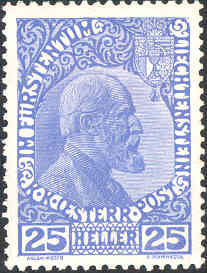
Liechtenstein, officially the Principality of Liechtenstein, is a doubly landlocked German-speaking microstate located in the Alps between Austria and Switzerland. Liechtenstein is a semi-constitutional monarchy headed by the prince of Liechtenstein of the House of Liechtenstein, currently led by Hans-Adam II. Liechtenstein is bordered by Switzerland to the west and south and Austria to the east and north. It is Europe's fourth-smallest country, with an area of just over 160 square kilometres and a population of 39,790. It is the world's smallest country to border two countries.

Political identity came to the territory now occupied by the Principality of Liechtenstein in 814, with the formation of the subcountry of Lower Rhætia. Liechtenstein's borders have remained unchanged since 1434, when the Rhine established the border between the Holy Roman Empire and the Swiss cantons.

Vaduz is the capital of Liechtenstein and also the seat of the national parliament. The city, which is located along the Rhine, has 5,696 residents. The most prominent landmark of Vaduz is Vaduz Castle, perched atop a steep hill overlooking the city. It is home to the reigning prince of Liechtenstein and the Liechtenstein princely family. The city's distinctive architecture is also displayed in landmarks such as the Cathedral of St. Florin, Government House, City Hall, the National Art Gallery, as well as the National Museum. Although Vaduz is the best-known town in the principality internationally, it is not the largest; neighbouring Schaan has a larger population.
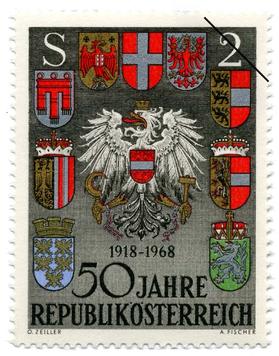
This article deals with the stamps and postal history of the Austrian Empire, Cisleithania within Austria-Hungary, and the Republic of Austria.

A stamp catalog is a catalog of postage stamp types with descriptions and prices.
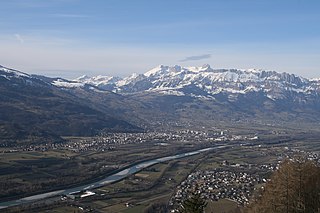
Schaan is the largest municipality of Liechtenstein by population. It is located to the north of Vaduz, the capital, in the central part of the country. As of 2019 it has a population of 6,039, making it the most populous administrative district in Liechtenstein. Representing an important traffic hub and industrial location of the country, Schaan covers an area of 26.92 km2 (10.39 sq mi), including mountains and forest. It is a municipality within the electoral district of Oberland in the Principality of Liechtenstein. Schaan contains four enclaves: Brunnenegg, Gritsch, Guschg, and Plankner Neugrütt.
Each "article" in this category is a collection of entries about several stamp issuers, presented in alphabetical order. The entries are formulated on the micro model and so provide summary information about all known issuers.
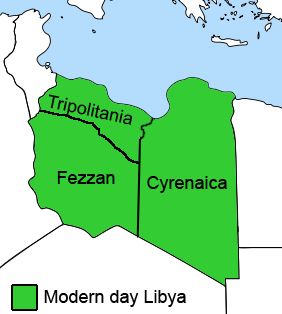
This is a survey of the postage stamps and postal history of Tripolitania, now part of Libya.

Liechtenstein's one railway line is operated by Austrian Federal Railways. As such, it represents an exception to the more usual Liechtenstein practice of cooperating closely with Switzerland, as in the case of the principality's use of the Swiss franc as its currency and its membership of a common customs area with its western neighbour. The rail line carries international services between Austria and Switzerland, most of which run non-stop through the principality. Only one local train service stops at three of the four stations located in Liechtenstein. The S2 runs 11 times in each direction a day on Workdays connecting Buchs SG to Feldkirch. In addition, there are 9 long-distance international trains that pass through Liechtenstein. The line is also used to transport freight.
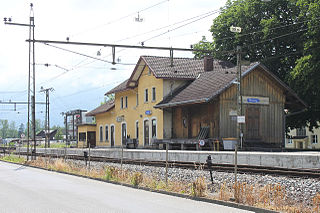
Nendeln is a village located in the municipality of Eschen in Liechtenstein.

In the 19th century the Principality of Liechtenstein had no postal service of its own. In 1818 the first post office was established in Balzers. From then on the Austrian post delivered all postal consignments. In 1845 another post office opened in the capital Vaduz. In 1852 after the introduction of postage stamps Liechtenstein's government closed a contract with Austria which regulated the execution of the postal system by Austria. This contract was renewed in 1876. Regarding the postal delivery Liechtenstein was equal to Austria. The postage within the country and to Austria was the same as within Austria. Austrian postage stamps were used too.

This is a survey of the postage stamps and postal history of Slovenia.

This is a survey of the postage stamps and postal history of Slovakia.

This is a survey of the postage stamps and postal history of Cyrenaica, now part of Libya.

This is a survey of the postage stamps and postal history of Libya. Libya is a country located in North Africa. Bordering the Mediterranean Sea to the north, Libya lies between Egypt to the east, Sudan to the southeast, Chad and Niger to the south, and Algeria and Tunisia to the west.

Postage stamps of Italian Libya were stamps issued by the Kingdom of Italy for use in Italian Libya, between 1912 and 1943.
This is an index of Liechtenstein related topics.

The education system in Liechtenstein is similar to the Swiss education system.

Georg Malin is a Liechtensteiner artist, sculptor, historian and politician. Between 1974 and 1978, Malin served as member of the governing council in the Liechtenstein government, for the Progressive Citizens Party (FBP). He previously served as a member of the Landtag of Liechtenstein from 1966 to 1974, where he was also a member on the parliamentary delegation to the European Council.

Rainer Vollkommer is a German-Swiss classical archaeologist and art historian.

